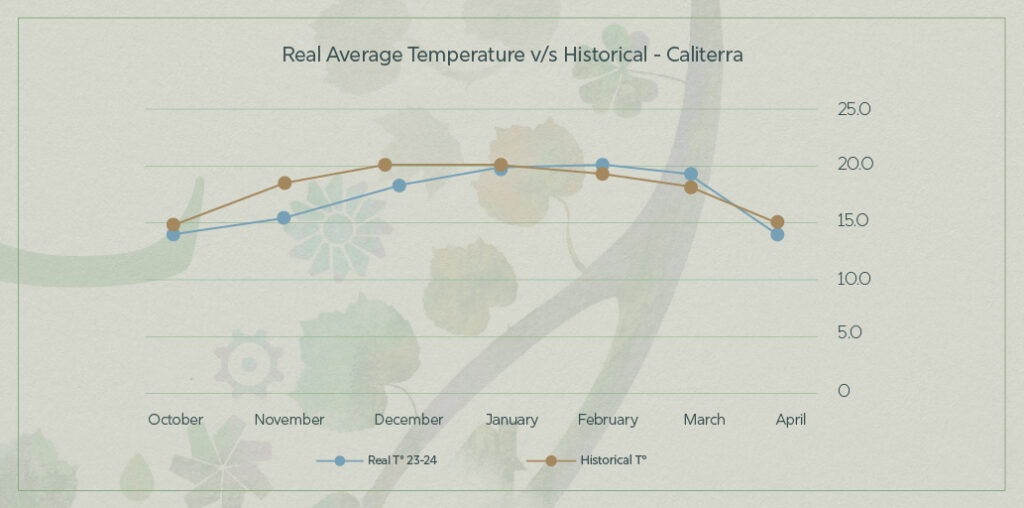Return
29 July, 2024
Vintage Report Caliterra Winery 2024 - Colchagua Valley
“Slow onset season in sugar uptake and phenolic maturity. Good temperatures and favorable weather allowed us to reach optimal harvest points, with low alcohol levels, good color and great quality in Bordeaux varieties.”
Abundant winter rains marked the season with episodes of up to 200 mm per event. The cold and saturated soils, together with a cold spring, caused a delay in plant phenology, with late root peaks and late metabolic activities.
The heavy rains made it possible to start with water reserves at maximum capacity, which allowed irrigation to begin at least one month later than usual, as vegetative development was slow. A calm start to the season, which over time showed good vigors and lower fertilization requirements.
Slow ripening, with prolonged phenological stages that delayed the harvest, resulting in wines with low alcohol content in some varieties such as Merlot and Malbec. The production levels achieved were largely satisfactory overall.
Precipitation
With a total of 891 mm (June to May), distributed mainly in winter and spring (750 mm between June and October), this has been the wettest season in the last 10 years, accumulating 60% more rainfall than the previous season (451 mm), being almost twice as much. The benefits of a rainy year in general translate into better vigor and good yields.


Average Temperatures
Overall (October to April), 3% lower than historical, with a cooler spring (-8%), a summer almost the same as historical (-1%), and the same in autumn (-1%). The effect of the cold spring could be seen in the irregular harvest of the Carmenere and Malbec quarts, mainly.

Thermal Accumulation
Thermal accumulation was 7% lower than historical data, 1,630 vs. 1,752 degree days. Although the analysis of temperatures and potential evapotranspiration shows a difference with respect to historical data, in this parameter the effect of the

cold year is undoubted, with 24% less accumulation in spring, 4% less in summer, and 2% more in autumn, influenced by a slightly warmer March.
The effect of the lower and more gradual thermal accumulation resulted in a delay of the phenological stages, with longer duration, a very long pint and, of course, a slow ripening, with lower alcoholic content at harvest compared to the same date in previous years.


The harvest culminated in mid-May with the Carmenere variety and, in general, the grapes were in excellent health, allowing a moderate/slow harvest that facilitated cellar work and allowed optimal vinifications for each variety and quality.
In general, the wines are expressive, with a complex aromatic intensity, rich concentration and soft tannins that mark the elegance of the season. Undoubtedly, 2024 will be marked by wines of excellent varietal typicity, balance in the mouth and great cellaring capacity.







